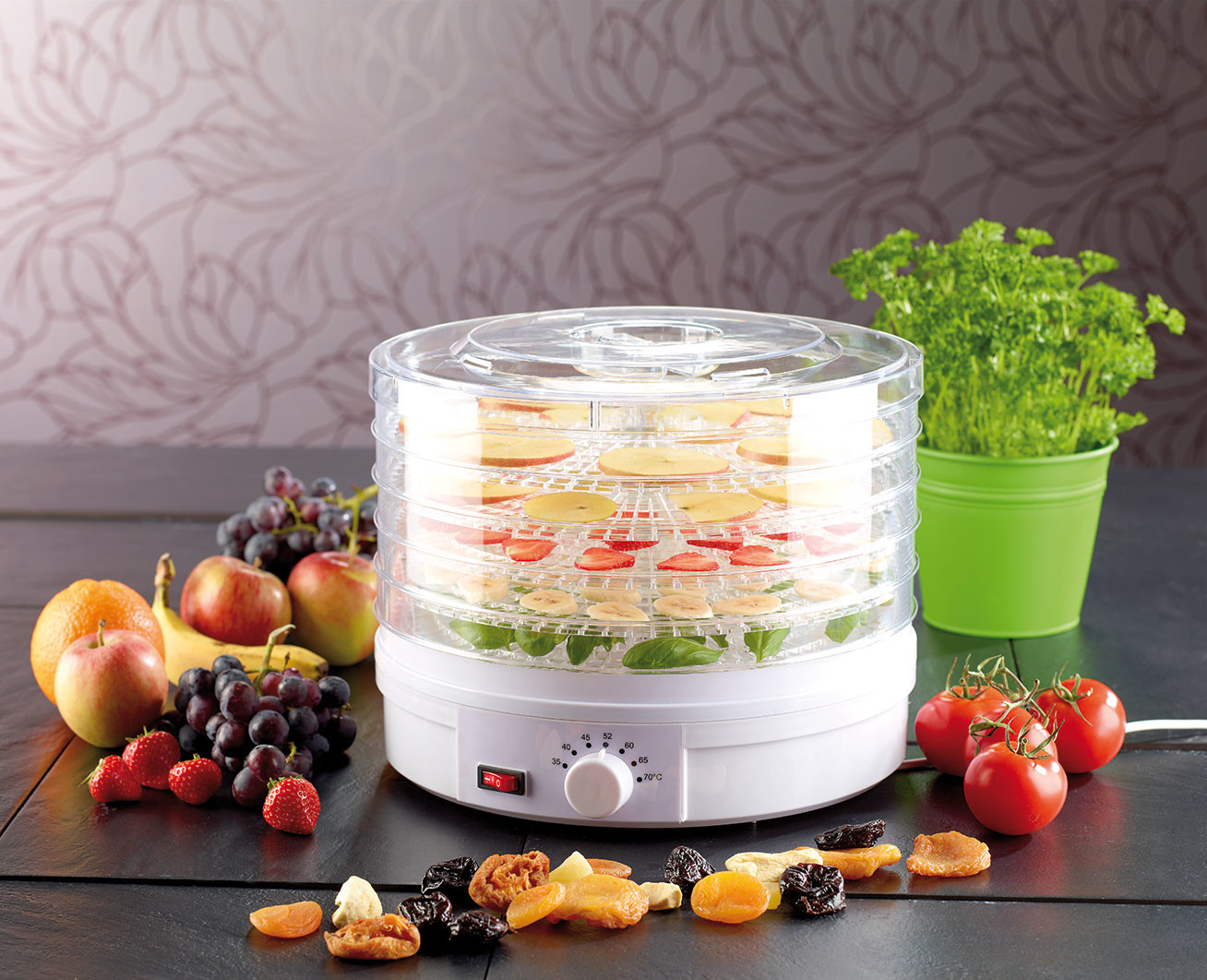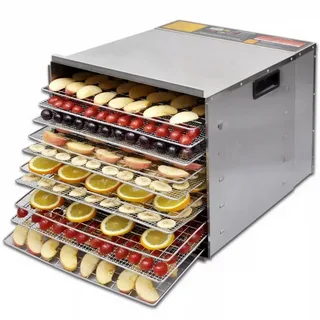In the modern age of culinary advancements and environmental consciousness, food-drying technology emerges as a beacon of sustainability and efficiency. Across Australia, the adoption of a food dryer or commercial-dehydrator is on the rise, revolutionizing how businesses and households approach food preservation. This guide will navigate through the multitude of benefits offered by food-dryers, underscoring their role in slashing food waste and fostering significant savings.
Understanding the Basics of Food-Drying Technology
At its core, food-drying technology is a method that dates back to ancient civilizations, refined over the millennia to become a cornerstone of modern food preservation. It involves a deceptively simple process: the removal of moisture from food items to inhibit the growth of microorganisms such as bacteria, yeast, and molds that cause food to spoil. Utilizing a food-dryer, this technique achieves dehydration through the circulation of hot, dry air over and around the food, effectively drawing out water. This reduction in moisture content significantly extends the shelf life of the preserved items whilst maintaining their nutritional value, flavor, and texture.
With advancements in technology, today’s food-dryers have become highly efficient and user-friendly. They can accommodate a broad spectrum of foods, including fruits, vegetables, meats, and herbs, making them an indispensable tool for both home kitchens and commercial enterprises. The process not only preserves the inherent qualities of fresh produce but also offers the flexibility to create a variety of dehydrated products. From chewy fruit snacks and tender jerky to aromatic herbs and spices, the possibilities are vast. As such, understanding the operational mechanics and benefits of food-drying technology is the first step towards harnessing its potential for sustainable food preservation.
The Role of Food-Dryers in Reducing Food Waste
The staggering quantities of food discarded each year, much of it from spoilage, underscore a pressing global issue. Food-dryers emerge as a pivotal tool in addressing this challenge, offering a robust solution that diminishes waste significantly. By extracting moisture and thus inhibiting the proliferation of spoilage-causing microorganisms, these devices notably extend the lifespan of perishable goods. This capability allows for a considerable decrease in the volume of food rendered unusable and discarded, aligning with broader efforts towards environmental conservation.
Furthermore, the process of dehydration, facilitated by food-dryers, means that items take up less space. This aspect is particularly beneficial for both commercial entities and households, aiding in more efficient storage and inventory management, and consequently reducing the likelihood of over-purchasing or overproduction. In a direct correlation, the diminished need for frequent replacements due to spoilage translates into noticeable financial savings. These savings are not trivial; they represent a meaningful reduction in the economic impact associated with food waste.
Equally, by converting surplus fresh produce into dehydrated forms, food-dryers support a cycle of sustainability. They encourage the repurposing of food items that might otherwise be discarded, fostering a culture of resourcefulness and innovation in the kitchen. This adaptability not only champions environmental stewardship but also amplifies the utility of food-dryers as indispensable allies in the fight against food waste.
The Economic Advantages of Using a Commercial Dehydrator
Engaging with commercial dehydrator offers tangible financial benefits, particularly evident in the realms of production efficiency and product diversification. By investing in these robust machines, businesses can significantly reduce the costs associated with food spoilage. As items are preserved for extended periods, the frequency of inventory replacement decreases, alongside a reduction in waste management expenses.
Moreover, the capability to process large quantities of food in one go enhances operational efficiency. This scalability is vital for businesses looking to expand their product offerings or explore new markets. Dehydrated foods command a higher market value, especially when marketed as premium, artisanal, or organic products. This presents an opportunity for businesses to diversify their income streams by incorporating a range of dehydrated goods into their portfolio.
Energy efficiency is another pivotal factor contributing to the economic advantages of using commercial dehydrators. Modern units are designed to optimize energy consumption, balancing operational costs with environmental considerations. By selecting a model that aligns with their production needs, businesses can minimize electricity usage without compromising on output quality or volume.
Selecting the Right Food-Dryer for Your Business
Identifying the ideal food-dryer or commercial dehydrator for your business in Australia requires careful consideration of various critical factors tailored to your specific needs. The volume of produce you intend to dehydrate plays a paramount role in this decision. For smaller ventures, a compact food-dryer might be sufficient, whilst larger enterprises or those looking to scale up production will benefit from investing in a commercial-grade dehydrator with higher capacity and efficiency.
The diversity of food items you plan to process is another vital consideration. Different models offer unique features such as adjustable shelves, temperature controls, and air flow systems, which can greatly affect the quality and consistency of the final product. Hence, it is essential to select a machine that can accommodate the specific requirements of the foods you aim to dehydrate, whether they are fruits, vegetables, meats, or herbs. Budget constraints also play a significant role in the selection process.
Whilst it might be tempting to opt for less expensive models to save upfront costs, it’s important to evaluate the long-term operational and maintenance expenses. Energy efficiency, durability, and ease of cleaning are factors that can influence ongoing costs and operational efficiency. Matching the features and capabilities of a food-dryer or commercial dehydrator with your business objectives, operational scale, and the types of food you intend to preserve will ensure you make an investment that not only meets your current needs but also supports future growth and diversification.
Maximizing Efficiency with Your Commercial-Dehydrator
To optimize the performance of your commercial-dehydrator, a strategic approach is essential. Begin by ensuring that food is evenly sliced, a factor that promotes consistent drying times and quality across all pieces. This uniformity is critical in avoiding under or over-dehydrated products that can affect both taste and preservation efficacy. Pre-treating foods, such as blanching vegetables or dipping fruits in lemon juice, can also enhance colour retention and minimize nutrient loss during the dehydration process.
Loading the dehydrator correctly plays a pivotal role in maximizing energy use. Arrange the produce in a single layer, avoiding overlap, to ensure optimal air flow and even drying. It’s also advisable to fully utilize the dehydrator’s capacity to enhance energy efficiency, but without overloading it, as this can extend drying times and compromise the final product’s quality.
Regular maintenance cannot be overstated; keeping your dehydrator clean ensures it operates at peak efficiency and prolongs its lifespan. This involves routine checks and cleaning of the air filters, trays, and interior spaces to prevent any build-up of food particles that could foster bacterial growth or contaminate flavors between batches. Adhering to these practices not only extends the shelf life of the dehydrated products but also ensures the dehydrator runs efficiently, contributing to the overall sustainability and cost-effectiveness of food preservation efforts.
Innovative Uses of Commercial Dehydrators Australia
In the Australian market, commercial dehydrators Australia are finding their niche in an array of inventive applications that stretch beyond the conventional boundaries of food preservation. Entrepreneurs and established businesses alike are tapping into the versatility of these machines, exploring new territories such as the creation of gourmet dehydrated meals that cater to the backpacking and outdoor adventure community. These lightweight, easy-to-carry meals are not only nutritious but also provide a taste of home in the wilderness.
Another burgeoning area is the production of dehydrated pet food and treats. Given the increasing demand for high-quality, preservative-free pet products, dehydrators are being utilized to produce healthy, chewy snacks that pets find irresistible. This segment not only caters to the domestic market but also opens avenues for export. The wellness and beauty industries are harnessing the power of dehydrators to create natural, dehydrated ingredients for skincare products.
From dried botanicals for soaps and bath bombs to fruit and vegetable powders for cosmetics, the application of dehydrating technology in these areas underscores its potential to foster innovation across diverse sectors. Such creative utilization of commercial dehydrators underscores a broader trend towards resourcefulness and sustainability, positioning Australia at the forefront of dehydrating technology application. This adaptability not only expands the market for dehydrated products but also paves the way for future innovations in various industries.
 Overcoming Challenges in Commercial Food Drying
Overcoming Challenges in Commercial Food Drying
Navigating the complexities of commercial food drying requires a nuanced understanding of the technique and a readiness to address its inherent challenges. One of the primary hurdles involves ensuring uniform quality across all dried products. Different food items demand specific drying conditions—temperature, humidity, and time—to achieve optimal results. Adjusting these variables accordingly is crucial to maintaining consistency, especially as production scales up.
Expansion, whilst a sign of success, introduces the need for larger or multiple dehydrators. This transition demands not only financial investment but also a strategic approach to integrating new machinery without disrupting existing operations. Such scaling must be managed carefully to preserve product quality and efficiency. Compliance with food safety regulations represents another significant challenge. The dehydrating process must eliminate the risk of bacterial growth or contamination, requiring businesses to stay abreast of and adhere to stringent standards.
This often means implementing rigorous monitoring and quality control procedures to ensure that all dehydrated products are safe for consumption. Educating oneself about the drying requirements of various food items, investing in the appropriate equipment, and rigorously adhering to food safety protocols are vital steps in overcoming the hurdles associated with commercial food drying. Whilst these challenges may seem daunting, with meticulous planning and execution, they can be effectively managed to reap the full benefits of this preservation method.
FAQs
What is the shelf life of foods after dehydration?
The longevity of dehydrated foods varies significantly with factors such as the type of food, method of dehydration, and storage practices. Generally, they can be preserved for several months to a year, with optimal conditions extending their shelf life.
Are there any limitations on the types of food that can be dehydrated?
Whilst a broad range of foods are suitable for dehydration, items with a high fat or dairy content are less ideal due to their propensity to spoil more rapidly.
How do food dryers fare in terms of energy consumption?
Contemporary models of food dryers and commercial-dehydrators are engineered with energy efficiency in mind. The energy usage, however, can vary based on the specific model and frequency of use.
Is it feasible to dehydrate food using a conventional oven?
Dehydrating food in an oven is technically possible, but it is generally less efficient and offers less precise control compared to using a dedicated food-dryer, which may affect the quality of the dehydrated product.
Do dehydrated foods maintain their nutritional content?
Dehydration preserves most of the nutrients in food. However, some vitamins, particularly vitamin C, may diminish during the process. Despite this, dehydrated foods remain a nutritious option.
Conclusion
Embracing the power of food-dryers and commercial dehydrators signifies a leap towards sustainability, efficiency, and economic savings in Australia’s food preservation landscape. These technologies offer a practical solution to the pressing issue of food waste, whilst also unlocking the potential for diverse culinary innovations and business opportunities. As we navigate the complexities of food drying, the collective move towards adopting these methods can foster a more sustainable, waste-conscious society. In harnessing the benefits of dehydration, we pave the way for a future where food is valued and preserved with the utmost respect for our resources and environment.
| Other Good Articles to Read |
| niche blogs connect |
| blogs 97 |
| Blog Stitution |
| blogs unplugged |
| blogs cotchrouge |
| blog signatr |
| blog sintonias |
| blog zilla |
| consumer forums |
| finance forums |
| g blogs |
| too blog |
| Related Business Listings |
| Contact Directory |
| Local Business Profiles |
